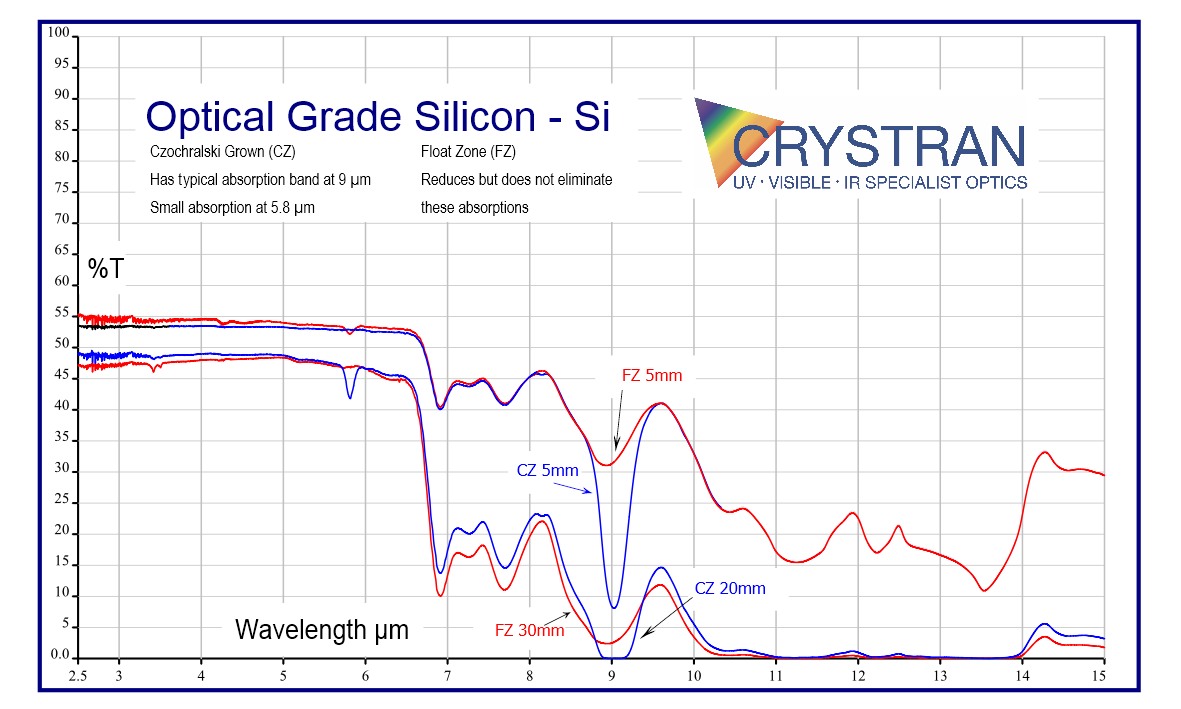

Silicon Si
Silicon is used as an optical window primarily in the 3 to 5 micron band and as a substrate for production of optical filters. Large blocks of Silicon with polished faces are also employed as neutron targets in Physics experiments.


| µm | No |
|---|---|
| 1.357 | 3.4975 |
| 1.367 | 3.4962 |
| 1.395 | 3.4929 |
| 1.5295 | 3.4795 |
| 1.66 | 3.4696 |
| 1.709 | 3.4664 |
| 1.813 | 3.4608 |
| 1.97 | 3.4537 |
| 2.153 | 3.4476 |
| 2.325 | 3.4430 |
| µm | No |
|---|---|
| 2.714 | 3.4358 |
| 3.000 | 3.4320 |
| 3.303 | 3.430 |
| 3.500 | 3.4284 |
| 4.000 | 3.4257 |
| 4.258 | 3.4245 |
| 4.500 | 3.4236 |
| 5.000 | 3.4223 |
| 5.500 | 3.4213 |
| 6.000 | 3.4202 |
| µm | No |
|---|---|
| 6.500 | 3.4195 |
| 7.000 | 3.4186 |
| 7.500 | 3.4186 |
| 8.000 | 3.4184 |
| 8.500 | 3.4182 |
| 10.00 | 3.4179 |
| 10.50 | 3.4178 |
| 11.04 | 3.4176 |
Silicon is grown by Czochralski pulling techniques (CZ) and contains some oxygen which causes an absorption band at 9 microns. To avoid this, Silicon can be prepared by a Float-Zone (FZ) process. Optical Silicon is generally lightly doped ( 15 to 40 ohm cm) for best transmission above 10 microns. Silicon has a further pass band 30 to 100 microns which is effective only in very high resistivity uncompensated material. Doping is usually Boron (p-type) and Phosphorus (n-type).
REFERENCES:
(1) Handbook Optical Constants, ed Palik, V1, ISBN 0-12-544420-6
(2) Li, Refractive Index of Germanium etc, J.Phys Chem, V9, p561, 1980
(3) Icenogle et al, Appl. Opt. V15, 2348 (1976)
(4) Wortman & Evans, V36, (1), P153 (1965)